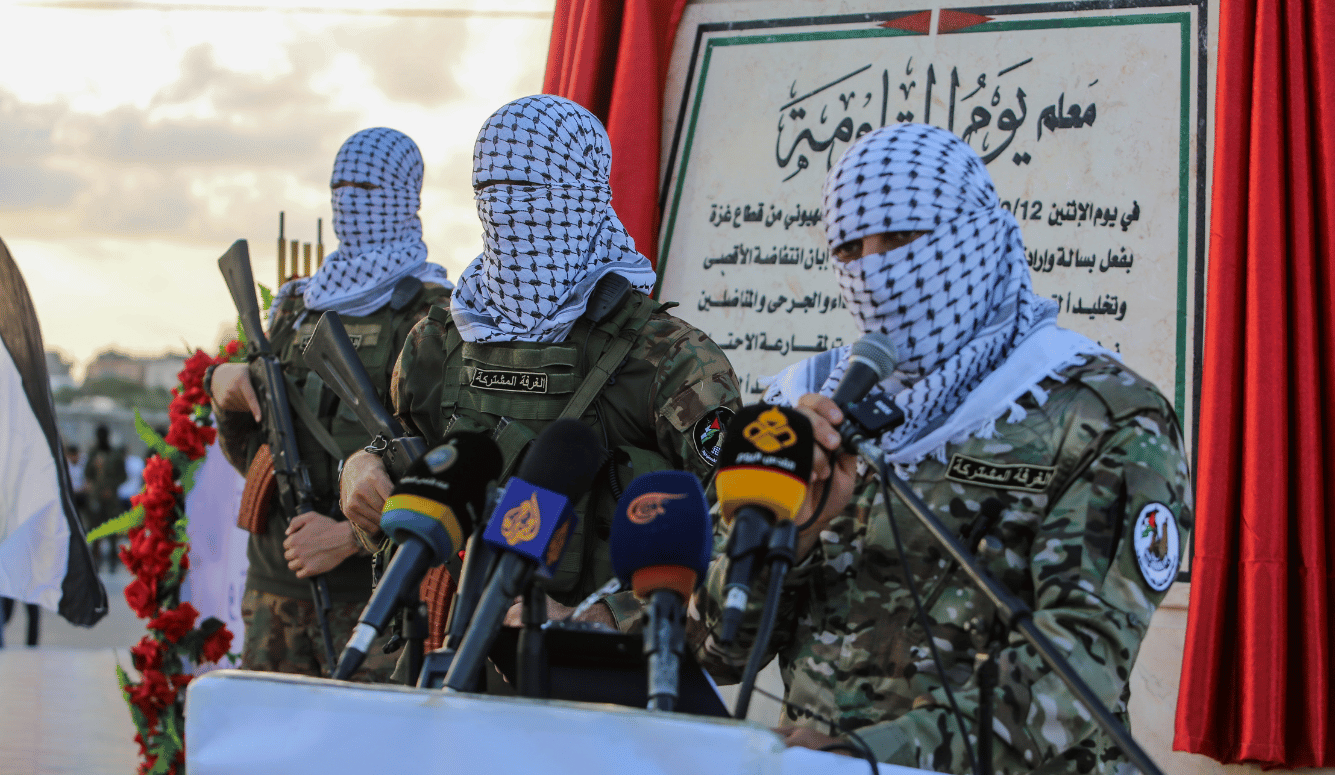Politics
Terror’s Intelligence Apparatus
Netanel Flamer’s book about Hamas’s intelligence war on Israel could be read with equal interest by members of Western security forces, and by members of the very groups against which they struggle.

A review of The Hamas Intelligence War Against Israel by Netanel Flamer; 216 pages; Cambridge University Press (November 2024)
Netanel Flamer’s The Hamas Intelligence War against Israel is an extraordinary book: a dispassionate and factual history of Hamas’s intelligence-gathering activities during its first 34 years of existence, based on primary sources. As far as I know, there isn’t another study like it about this group or any other comparable violent non-state actor. Throughout the book, the author—a senior lecturer in the department of Middle Eastern Studies at Bar-Ilan University and a senior research fellow at the Begin-Sadat Centre for Strategic Studies—demonstrates an encyclopaedic knowledge of the Israel–Palestine conflict and a remarkable ability to identify and communicate only the essential details.
Without passing moral judgement or paying much attention to Hamas’s members as people, Flamer lays out a narrative of increasingly sophisticated solutions to the practical problems of fighting an asymmetrical war with Israel, from 1987 (just before Hamas was founded) until 2021. I can imagine this book being read with equal interest by members of security forces aiming to constrain violent non-state actors, and by members of the very groups against which they struggle. Flamer takes no interest in Hamas’s ideology except where it has a direct impact, positive or negative, on the group’s capabilities. As such, he provides his readers with an opportunity to understand the practical reasons behind Hamas’s successes and failures.
The book is organised thematically, with chapters devoted to Hamas’s evolving capabilities in geospatial intelligence (GEOINT), human intelligence (HUMINT), open-source intelligence (OSINT), signal intelligence (SIGINT) and cyber warfare, counterintelligence, operational intelligence, and—finally—research, analysis, and assessment. Each chapter tells a story in chronological order, although the chapters themselves also have a semi-chronological organisation in relation to one another, as Hamas’s geospatial-intelligence capabilities were the first to emerge, while other forms of intelligence-gathering—especially those related to cyber warfare—were developed later. The counterintelligence chapter focuses on the same categories of intelligence, although not in the same order, examining steps taken by Hamas to thwart Israeli attempts at human intelligence, signal intelligence, and so on.
For the most part, Hamas’s intelligence-gathering remained quite primitive until Israel’s withdrawal from the enclave in 2005 and Hamas’s violent expulsion of the Fatah-led Palestinian Authority two years later. These developments allowed Hamas to function more like a state. Until then, much intelligence-gathering simply consisted of forward-observation for specific terror attacks, generally carried out by members of the cell that would execute the attack itself. However, the beginnings of a systematic approach to geospatial intelligence-gathering were already in place by that point, with the formation of dedicated teams devoted to observation of IDF activities.
Flamer shows that Hamas’s approach to counterintelligence was strongly developed from the beginning—it had to be for the organisation to have any chance of surviving under the gaze of Israel’s own intelligence efforts. Indeed, Hamas’s first counterintelligence agency, al-Majd, which was later rolled into Hamas General Security, preceded the formation of Hamas itself. As Flamer explains, al-Majd began as a sort of morality police, tracking the activities of Gazans suspected of immoral behaviour or collaboration with Israel, and then abducting, brutally interrogating, and (often) executing them. Flamer estimates that as many as eighty percent of supposed collaborators murdered by al-Majd during the First Intifada were entirely innocent. Interestingly, al-Majd operatives were able to continue these activities even when incarcerated within Israeli prisons, torturing and killing other Palestinian inmates suspected of collaboration. When Hamas took control of the Gaza Strip, it handed over the running of Gaza Prison to Hassan al-Gamasi, who had been serving a 200-year sentence for the murder of multiple Palestinian “collaborators.”
Working for al-Majd provided individuals with considerable power, which some members were able to parlay into career advances within Hamas. Ismail Haniyeh became the first Hamas leader of the Gaza Strip in 2007 and served as chairman of the Hamas Politburo from 2017 until his assassination in 2024. His rise through the ranks began when he was recruited to al-Majd two years before the founding of Hamas. Yahya Sinwar, who succeeded Haniyeh as leader of the Strip and Politburo chairman before he was killed by the IDF in 2024, was the first head of al-Majd for the southern Gaza region. In addition to the extreme compartmentalisation and secrecy Hamas adopted from the outset (as seen, for instance, in the refusal of the organisation’s military wing to share details about abducted Israeli soldier Gilad Shalit, even with its own prime minister), the al-Majd–Hamas pipeline helped to shape the latter’s organisational culture—and indeed, wider Gazan society.





